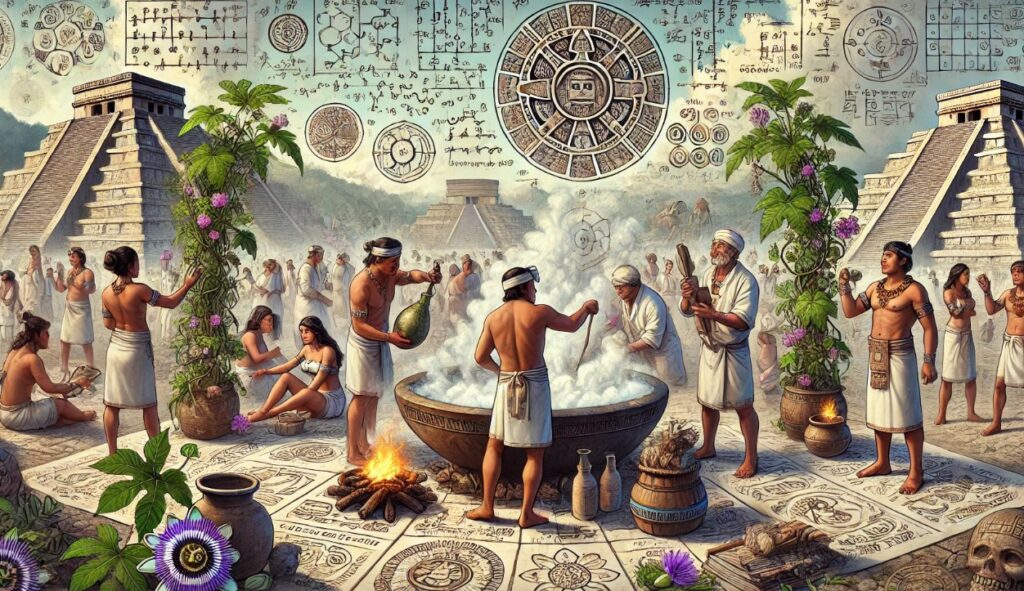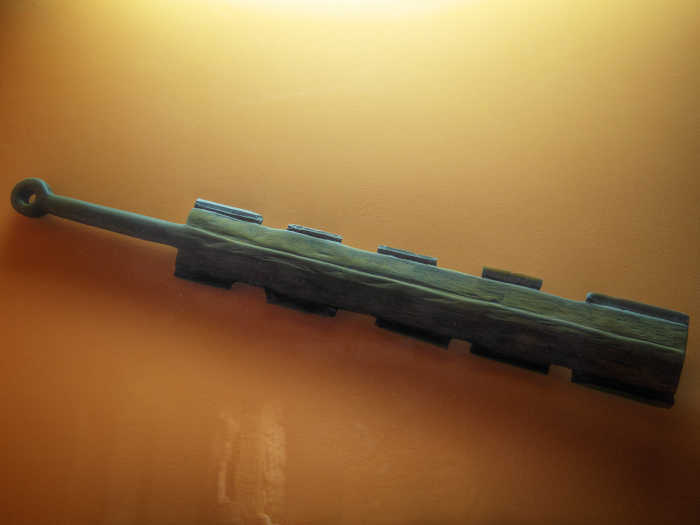Despite what you might think, the Aztecs were a civilization actually very well-known for their advanced technology and other cultural feats. Though their technology centered around combat was not effective enough to eventually fight off their colonization by the Spaniards, they excelled in many other areas.
Science & Medicine

The ways in which Aztecs used science was unusually advanced for societies of their time.
For example, they showed a significant understanding of placebo effects in both studies and treatment, with documentation suggesting that they used placebo treatment sometimes to make patients feel as though they had been cured. Because this shows a very balanced view on not only science but also psychology, it’s important to highlight when showing how advanced Aztec science was.
The Aztecs were also advanced in their understanding of mathematics — they had a reliable system of numeric notation that was on par with that of Egyptian society. They would also use this for scientific purposes, involving equations into scientific experiments that would subsequently inform medical decisions and procedures.
Aztecs had a nuanced view of medicine and healthcare that we would typically associate with forms of Eastern thought in a modern-day context. Instead of curing the illness or trying to find a be all, end all solution, the Aztecs would focus instead on tempering the symptoms to reduce the overall condition.
They would also believe that disease and its related symptoms is either caused by natural or divine sources, meaning that they considered one’s overall health to be a reflection of their personal and religious well-being.
Despite this seemingly mystical view on health, the Aztecs practised incredibly advanced techniques that are comparable with treatment we use today.
For example, the Aztec emphasis on using plants as a way of treating illness was advanced because they understood the properties that certain plants have that can be harnessed for certain health benefits.
The passion flower was particularly useful as a medication to prevent muscular disruption, often being referred to as an antispasmodic medication. It was also used to help put patients to sleep or relax the muscles during surgery, something resembling our modern-day understanding of sedatives.
On the religious side of Aztec medicinal technology, they believed that fevers were the result of spiritual intervention, which meant that people had to respond by taking repeated steam baths in other to ward off the spirits.
They believed that this was because the heat would help the body sweat profusely, expelling the spirits along with the sweat. This way of treating fevers isn’t too unlike modern-day recommendations of “sweating it out”, something that has stayed an effective way of dealing with a fever well into the 21st century.
Calendar

The calendar concept had a significant impact on the majority of Aztec society. This is because calendars can help societies understand astrology, cultural influence, and how to budget time.
In particular, the Aztecs valued astrology as a main method for relating humans back to the stars, something they thought was integral to understanding mankind’s general purpose in the world. The calendar was one of the most prominent pieces of Aztec technology to feature this, utilizing a good deal of symbolism to convey meaning.

The Aztec calendar consisted of two main parts: one of 365 days and the other of 260 days.. The term “century” was applied to the calendar, but not after 100 years, like we do with our modern-day calendar. Instead, the Aztecs would use the term century to describe any period of 52 years, with each year comprising one of each of these cycles.
Farming

The Aztecs employed specific farming technology to cultivate their crops. Using the two main methods of terracing and chinampas, they would farm a majority of their crops, such as corn, squash, beans, and even tomatoes, chili peppers, limes, and peanuts.
The first method, terracing, was a type of field that involved irrigation by way of canals. The Aztecs dug these canals to direct water to the area, facilitating its flow through the conduits to the crops.
The second method of chinampas characterized much of the context for the Aztec agricultural industry. Chinampas were floating man-made islands that were built out of foundations that were discovered at the bottom of lakes. They were sustained and integrated with reed mats that were floated above the water, making the chinampas like floating farms. The Aztecs would attach the chinampas to the bottom of the lakes by planting willow trees that would grow incredibly fast, allowing the floating islands to be secured to the lake floor.
Inventions, Tools, and Weaponry

The Aztecs are largely known to have used technological advancement to gain superiority in warfare. Because of this, the lines between inventions, tools, and weaponry were always blurred, with all three categories influencing each other.
Some of the most impressive inventions the Aztecs constructed were primarily used for war. Out of all of their weaponry, the tlahhuitolli was an incredibly powerful, five-foot-long war bow. Characterized by its design reliant on animal sinew, it was frequently coupled with bows made from flint, chert, or even obsidian to attack enemies during conflict.
We recommend you to consult this article: Aztec Warrior Ranks
Blowguns (called tlacalhuazcuahuitl) were also a great example of the subtle nature of Aztec inventions. These were used as weaponry just as much as they were hunting tools, allowing those who used them to have clear shots of any human or animals within a long range. The darts themselves would be dipped with poisonous venom sourced from tree frogs.

A less threatening invention that the Aztecs created was chewing gum, believe it or not! Also utilized by Mayan society, the process of converting liquid harvested from sapodilla trees into a type of chewing gum began the gum phenomenon that is still heavily present in our society today.



